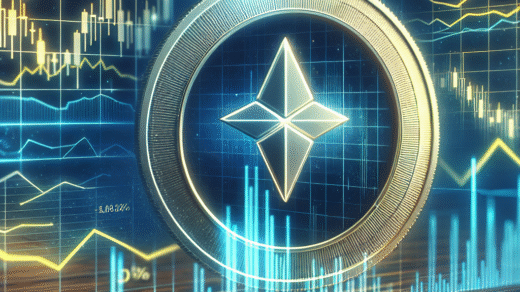Understanding April’s Consumer Price Index Report
In April, inflation in the United States eased more than anticipated, as the Consumer Price Index (CPI) rose by just 0.2%. This figure, released by the Bureau of Labor Statistics, was below economist forecasts of 0.3% and marked a notable increase from the previous month’s decline of -0.1%. On a year-over-year basis, the CPI increased by 2.3%, signifying the slowest inflation rate since February 2021.
Core CPI Insights: Analyzing the Underlying Trends
The Core Consumer Price Index, which excludes volatile food and energy prices, also rose by 0.2% in April. This was an increase from March’s figure of 0.1%, although it fell short of the expected 0.3%. Year-over-year, the Core CPI remained stable at 2.8%, aligning with forecasts and March’s performance.
The Impact on Bitcoin and Financial Markets
Following the release of the CPI data, Bitcoin (BTC) experienced a modest uptick, trading at $103,800 shortly after the announcement. This reaction highlights how intertwined cryptocurrency markets are with traditional economic indicators. Investors are keenly watching inflation trends as they make decisions regarding digital assets.
Market Reactions: Stocks, Treasury Yields, and Federal Reserve Policies
In the wake of the CPI release, U.S. stock index futures shifted from minor losses to small gains. Meanwhile, the 10-year Treasury yield dipped by one basis point to 4.44%. The latest inflation figures provide a glimmer of hope for those concerned about rising prices, but they are unlikely to compel the Federal Reserve to make immediate changes to interest rates.
Federal Reserve’s Stance on Rate Cuts
Despite the slower inflation, the Federal Reserve remains cautious. Recent data shows only an 11% chance of a rate cut in June, significantly down from 80% just a month prior. Market expectations for July also indicate a 62% likelihood that the Fed will maintain current rates, a notable shift from just a 7% chance a month earlier. Fed Chair Jay Powell has consistently underlined that the central bank is in no hurry to adjust rates, and recent developments, including the resolution of the China tariff situation, lend credence to this position.
What This Means for Investors
For investors in cryptocurrencies and traditional markets alike, understanding inflation trends is crucial. Slower inflation can bolster confidence in economic stability, potentially leading to increased investment in assets like Bitcoin and other cryptocurrencies. If you’re looking to diversify your portfolio with digital currencies, consider exploring how to buy Bitcoin, how to buy cryptocurrency, or even how to invest in Ethereum.
Conclusion: Navigating the Future of Inflation and Cryptocurrency
As we move further into 2023, investors must remain vigilant regarding economic indicators like the CPI. A robust understanding of inflation and its implications on financial markets will be key in navigating this volatile landscape. Whether you’re a seasoned investor or new to the world of cryptocurrencies, staying informed is essential. For the latest updates on Bitcoin and other digital currencies, keep an eye on trusted news sources and analysis platforms.
Meta Description: “Explore the latest U.S. CPI data revealing the slowest inflation growth in four years. Understand its impact on Bitcoin and market trends, and stay informed on how to navigate your cryptocurrency investments.”







